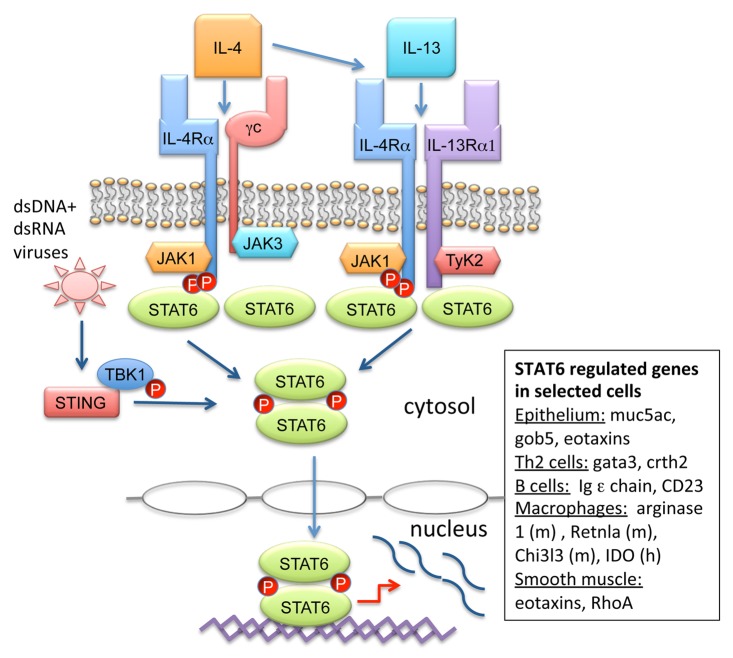Figure 1. STAT6 signaling results in distinct gene profiles in different lung cell types. IL-4 binds to the type-I IL-4R consisting of the IL-4 receptor α chain (IL-4Rα) and the common gamma chain (γc) to form the type I receptor. Additionally, both IL-4 and IL-13 bind to the type II receptor made up of IL-4Rα/IL-13Rα1. Stimulation of either receptor activates IL-4Rα and associated JAK1 to phosphorylate STAT6 monomers, which then homodimerize and translocate to the nucleus, resulting induction of gene expression. Alternatively, viral infection with dsDNA or dsRNA viruses leads to STING recruitment of TBK1 and STAT6. STAT6 is phosphorylated by TBK1 and an unidentified tyrosine kinase leading to homodimerization and translocation to the nucleus for anti-viral chemokine production (not shown). IL-4/IL-13-induced STAT6 activation leads to distinct gene expression profiles in different cell types involved in lung inflammation including epithelial cells, Th2 cells, B cells, macrophages, and smooth muscle cells.

An official website of the United States government
Here's how you know
Official websites use .gov
A
.gov website belongs to an official
government organization in the United States.
Secure .gov websites use HTTPS
A lock (
) or https:// means you've safely
connected to the .gov website. Share sensitive
information only on official, secure websites.
